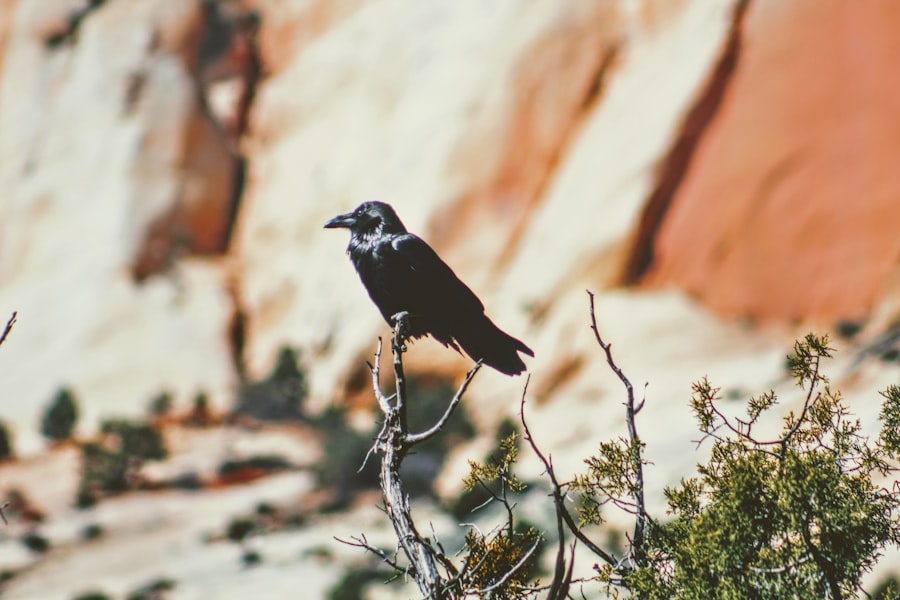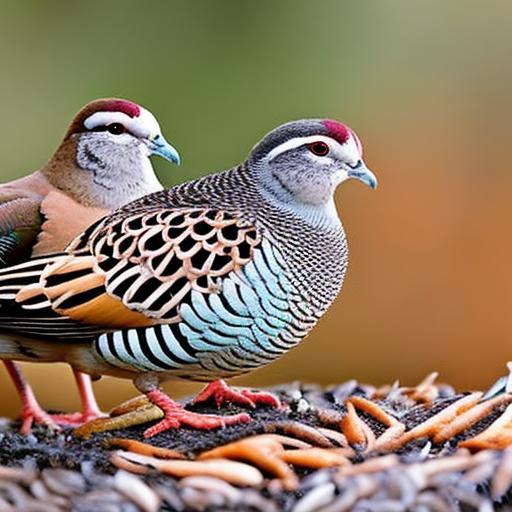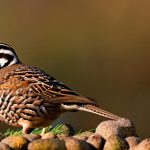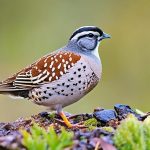Keeping button quails with ringneck doves can be a rewarding experience for bird enthusiasts. Both species are small, ground-dwelling birds that can coexist peacefully in the same aviary or enclosure. Button quails, also known as Chinese painted quails, are popular for their small size, colorful plumage, and interesting behaviors. They are active birds that enjoy foraging for food and dust bathing. Ringneck doves, on the other hand, are known for their gentle nature, soothing cooing sounds, and beautiful feather patterns. When kept together, these two species can create a harmonious and visually appealing environment for bird lovers to enjoy.
Button quails and ringneck doves have similar habitat and dietary requirements, making them compatible companions in a shared living space. However, it is important to understand the specific needs of each species to ensure their well-being and happiness. In this article, we will explore the compatibility between button quails and ringneck doves, housing requirements, feeding and diet considerations, social interaction and behavior, as well as health and wellness considerations for keeping these two bird species together. By understanding these aspects, bird enthusiasts can create a suitable environment for both button quails and ringneck doves to thrive.
Key Takeaways
- Button quails and ringneck doves can be kept together in the same aviary or enclosure, but it’s important to understand their compatibility and specific housing requirements.
- Button quails are ground-dwelling birds, while ringneck doves prefer to perch, so providing different levels and hiding spots in the enclosure is essential for their well-being.
- Both button quails and ringneck doves have specific dietary needs, so it’s important to provide a balanced diet that includes seeds, grains, and insects for the quails, and a variety of seeds and fruits for the doves.
- Button quails are known for their shy and skittish behavior, while ringneck doves are more social and outgoing, so it’s important to monitor their interactions and provide enough space for both species to feel comfortable.
- Regular health check-ups and monitoring for signs of stress or illness are crucial for keeping button quails and ringneck doves healthy and happy in the same environment.
Understanding the Compatibility between Button Quails and Ringneck Doves
Button quails and ringneck doves are generally compatible species that can coexist peacefully in the same enclosure. Both birds are ground-dwelling and prefer to spend their time foraging for food on the floor of their habitat. This shared behavior makes them well-suited to live together without major conflicts. Additionally, button quails and ringneck doves have similar dietary requirements, enjoying a mix of seeds, grains, and insects. This makes it easier for bird owners to provide a balanced diet for both species without the need for separate feeding arrangements.
In terms of temperament, button quails are known for their skittish nature and tendency to startle easily. On the other hand, ringneck doves are gentle and calm birds that are unlikely to intimidate or harass the smaller quails. This difference in temperament reduces the likelihood of aggressive behavior between the two species. However, it is important to monitor their interactions initially to ensure that there are no issues with bullying or aggression. Providing ample space and hiding spots within the enclosure can also help alleviate any potential conflicts between the birds.
Overall, the compatibility between button quails and ringneck doves makes them suitable companions for bird enthusiasts looking to create a diverse and visually appealing aviary or enclosure. By understanding their shared behaviors, dietary needs, and temperaments, bird owners can provide a harmonious living environment for both species to thrive.
Housing Requirements for Button Quails and Ringneck Doves
When keeping button quails with ringneck doves, it is important to provide a suitable housing environment that meets the needs of both species. The size of the enclosure will depend on the number of birds being housed together, but it is generally recommended to provide ample space for both button quails and ringneck doves to move around comfortably. A larger enclosure also allows for the inclusion of natural elements such as plants, branches, and hiding spots, which can enrich the birds’ environment and provide opportunities for natural behaviors.
The flooring of the enclosure should be suitable for both button quails and ringneck doves, as they are ground-dwelling birds that spend most of their time on the floor. A substrate such as sand or a mix of soil and sand can mimic their natural habitat and allow for natural behaviors such as dust bathing. Additionally, providing areas with shallow water for bathing can benefit both species, as ringneck doves enjoy bathing in shallow water while button quails benefit from dust bathing to maintain their plumage and skin health.
It is important to ensure that the enclosure is secure and predator-proof, as both button quails and ringneck doves are vulnerable to predators such as cats, dogs, and larger birds. Providing adequate shelter and hiding spots within the enclosure can also help reduce stress and provide a sense of security for both species. By meeting these housing requirements, bird enthusiasts can create a safe and enriching environment for button quails and ringneck doves to thrive.
Feeding and Diet Considerations for Button Quails and Ringneck Doves
Feeding button quails and ringneck doves a balanced diet is essential for their health and well-being. Both species have similar dietary requirements, enjoying a mix of seeds, grains, insects, and fresh greens. When housed together, it is important to provide a varied diet that meets the nutritional needs of both button quails and ringneck doves. A commercial seed mix designed for small ground-dwelling birds can serve as a base diet, supplemented with fresh greens such as lettuce, spinach, and kale.
In addition to seeds and greens, both button quails and ringneck doves benefit from the inclusion of live insects in their diet. Mealworms, crickets, and small earthworms can be offered as occasional treats to provide essential protein and enrichment for the birds. It is important to ensure that any live insects offered are appropriate in size for both species, as larger insects may pose a choking hazard for smaller birds such as button quails.
Providing access to grit or small stones is also important for both button quails and ringneck doves, as they use these materials to aid in digestion. Grit helps birds break down food in their gizzards, allowing for better nutrient absorption from their diet. By offering a balanced diet that meets the nutritional needs of both species, bird enthusiasts can ensure the health and vitality of their button quails and ringneck doves.
Social Interaction and Behavior between Button Quails and Ringneck Doves
Understanding the social interaction and behavior of button quails and ringneck doves is essential for creating a harmonious living environment for both species. Button quails are known for their skittish nature and tendency to startle easily, especially in response to sudden movements or loud noises. Ringneck doves, on the other hand, are gentle and calm birds that are unlikely to intimidate or harass the smaller quails. This difference in temperament can influence their social dynamics within a shared enclosure.
When housed together, it is important to provide ample space and hiding spots within the enclosure to allow both button quails and ringneck doves to retreat if they feel stressed or threatened. This can help reduce potential conflicts between the birds and provide a sense of security within their environment. Additionally, monitoring their interactions initially can help identify any issues with bullying or aggression, allowing bird owners to intervene if necessary.
Observing natural behaviors such as foraging, dust bathing, and social interactions can also provide insight into the well-being of both button quails and ringneck doves. Providing enrichment such as natural branches, perches, and nesting materials can encourage natural behaviors and promote mental stimulation for the birds. By understanding their social dynamics and providing an enriching environment, bird enthusiasts can create a harmonious living space for both button quails and ringneck doves.
Health and Wellness Considerations for Keeping Button Quails with Ringneck Doves

Maintaining the health and wellness of button quails and ringneck doves is essential for their long-term well-being. When housed together, it is important to monitor the overall health of both species regularly. This includes observing their behavior, appetite, plumage condition, and droppings to identify any signs of illness or distress. Any changes in behavior or physical appearance should be addressed promptly to ensure the health of the birds.
Providing a clean living environment is crucial for preventing health issues in both button quails and ringneck doves. Regularly cleaning the enclosure, including removing soiled substrate and providing fresh water daily, can help prevent the buildup of bacteria and parasites that may affect the birds’ health. Additionally, providing access to bathing areas such as shallow water or dust baths can help maintain the plumage and skin health of both species.
Regular veterinary check-ups are also important for ensuring the health of button quails and ringneck doves. Finding a veterinarian experienced in avian care can provide valuable guidance on preventive health measures as well as treatment options if any health issues arise. By prioritizing the health and wellness of both species, bird enthusiasts can create a thriving environment for button quails and ringneck doves.
Conclusion and Tips for Successfully Keeping Button Quails with Ringneck Doves
Keeping button quails with ringneck doves can be a rewarding experience for bird enthusiasts looking to create a diverse aviary or enclosure. Understanding the compatibility between these two species, providing suitable housing environments, offering a balanced diet, promoting social interaction and natural behaviors, as well as prioritizing health and wellness considerations are essential for successfully keeping button quails with ringneck doves.
To ensure a harmonious living environment for both species, here are some additional tips:
1. Provide ample space within the enclosure to allow both button quails and ringneck doves to move around comfortably.
2. Offer natural elements such as plants, branches, perches, and hiding spots to enrich their environment.
3. Monitor their interactions initially to identify any potential conflicts or aggression.
4. Provide a varied diet that meets the nutritional needs of both species.
5. Regularly clean the enclosure to maintain a clean living environment.
6. Prioritize preventive health measures such as regular veterinary check-ups.
By following these tips and understanding the specific needs of both button quails and ringneck doves, bird enthusiasts can create a thriving environment where both species can coexist peacefully and thrive.
If you’re considering keeping button quails with ringneck doves, it’s important to ensure that their coop is well-designed and maintained. A great resource for coop design and maintenance is the article on “How to Insulate a Chicken Coop” from Poultry Wizard. This article provides valuable insights into creating a comfortable and safe environment for your avian companions, which is essential for their health and well-being. Check out the article here to learn more about creating an ideal living space for your birds.
FAQs
What are button quails and ringneck doves?
Button quails are small ground-dwelling birds native to Asia and Africa. They are known for their small size and colorful plumage. Ringneck doves are a species of dove known for their gentle nature and distinctive ring-shaped marking around their necks.
Can button quails and ringneck doves be kept together?
Yes, button quails and ringneck doves can be kept together in the same aviary or enclosure. They are generally compatible and can coexist peacefully.
What should be considered when keeping button quails and ringneck doves together?
When keeping button quails and ringneck doves together, it is important to provide enough space for both species to move around comfortably. Additionally, it is important to provide appropriate nesting and roosting areas for the doves, while also ensuring that the quails have access to suitable ground cover and hiding spots.
What should be the diet for button quails and ringneck doves?
Button quails and ringneck doves have different dietary needs. Button quails are omnivorous and require a diet that includes a mix of seeds, insects, and commercial game bird feed. Ringneck doves are primarily seed-eaters and should be provided with a variety of seeds, as well as access to grit for digestion.
Are there any potential conflicts between button quails and ringneck doves?
While button quails and ringneck doves are generally compatible, there may be some potential conflicts, especially during breeding season. It is important to monitor the birds for any signs of aggression or territorial behavior, and to provide enough space and resources to minimize any potential conflicts.
Meet Walter, the feathered-friend fanatic of Florida! Nestled in the sunshine state, Walter struts through life with his feathered companions, clucking his way to happiness. With a coop that’s fancier than a five-star hotel, he’s the Don Juan of the chicken world. When he’s not teaching his hens to do the cha-cha, you’ll find him in a heated debate with his prized rooster, Sir Clucks-a-Lot. Walter’s poultry passion is no yolk; he’s the sunny-side-up guy you never knew you needed in your flock of friends!







